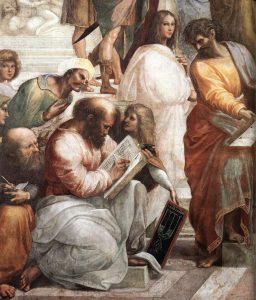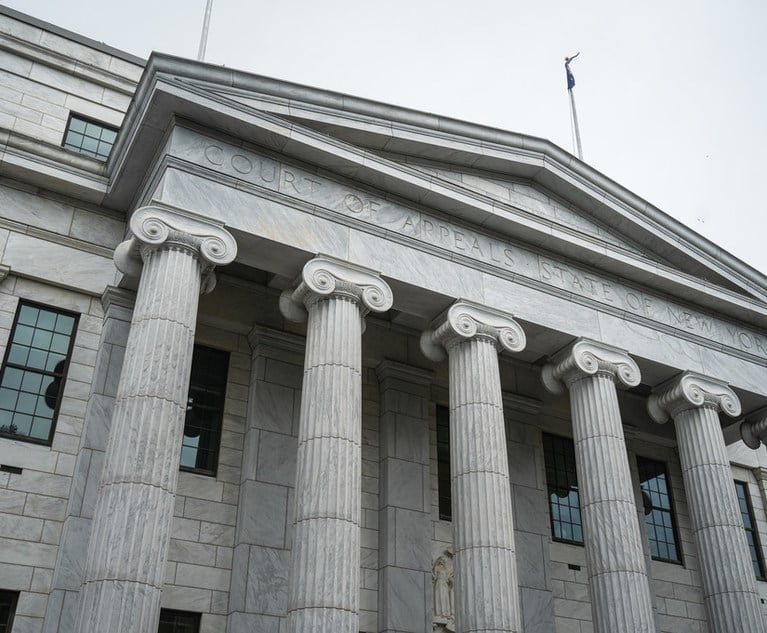Leonardo Da Vinci, Michelangelo and Raphael were the three artistic giant geniuses of the Italian High Renaissance. “The School of Athens,” painted by Raphael from 1510-1511 in the private library of Pope Julius II (1503-1513), represents the essence of that aesthetics. Namely, the primary interest of the artists was no longer painting what they saw in nature, visual reality, but rather depicting ideal reality, imagined reality, ultimate reality.
The architectural setting is an imagined, ideal, ancient Roman temple, barrel-vaulted incorporating an arch. The primary subject of the painting is historical intellectuals engaged in discussion. In the center Plato points upward to indicate his theory of ideal forms, whereas Aristotle points downward to indicate his study of everything earthly. Socrates is on the left using his fingers to count the points he is making to a group of youngsters. Ptolemy, Epicurus, Euclid and so many more are shown in intellectual activity. (Raphael gives special tribute to Michelangelo, the figure in the foreground with his left elbow on a marble block. In the summer of 1511, Raphael went into the Sistine Chapel when Michelangelo was painting its ceiling and, like everyone else, was overwhelmed by what he saw.) And in the lower left corner is a man wearing a turban crouching over the shoulder of Pythagoras who is demonstrating his mathematical thoughts on a slate.
 Close-up of part of the School of Athens fresco.
Close-up of part of the School of Athens fresco.


 The School of Athens is a fresco by Italian Renaissance artist Raphael as part of the artist’s commission to decorate the rooms in the Apostolic Palace in the Vatican.
The School of Athens is a fresco by Italian Renaissance artist Raphael as part of the artist’s commission to decorate the rooms in the Apostolic Palace in the Vatican.




